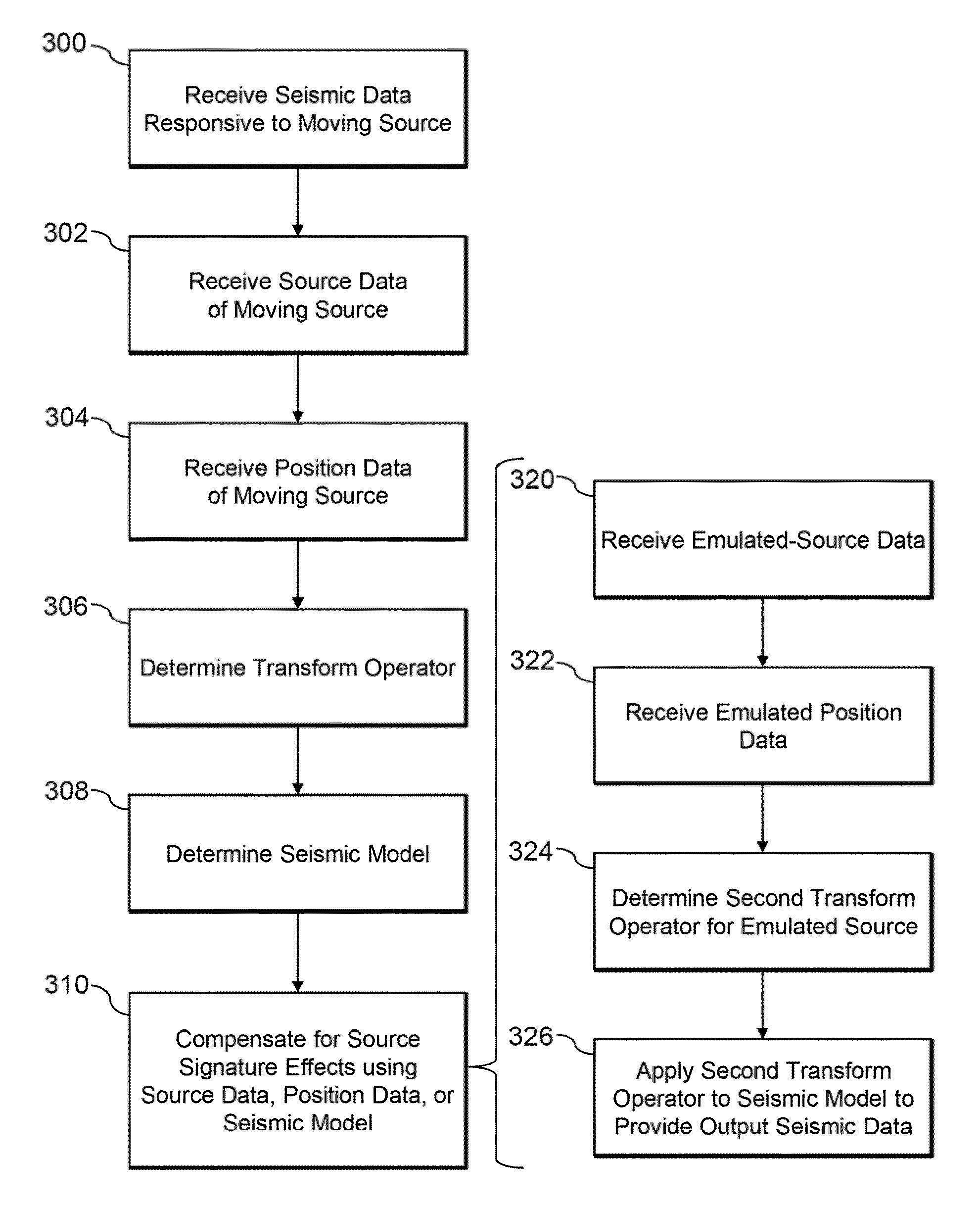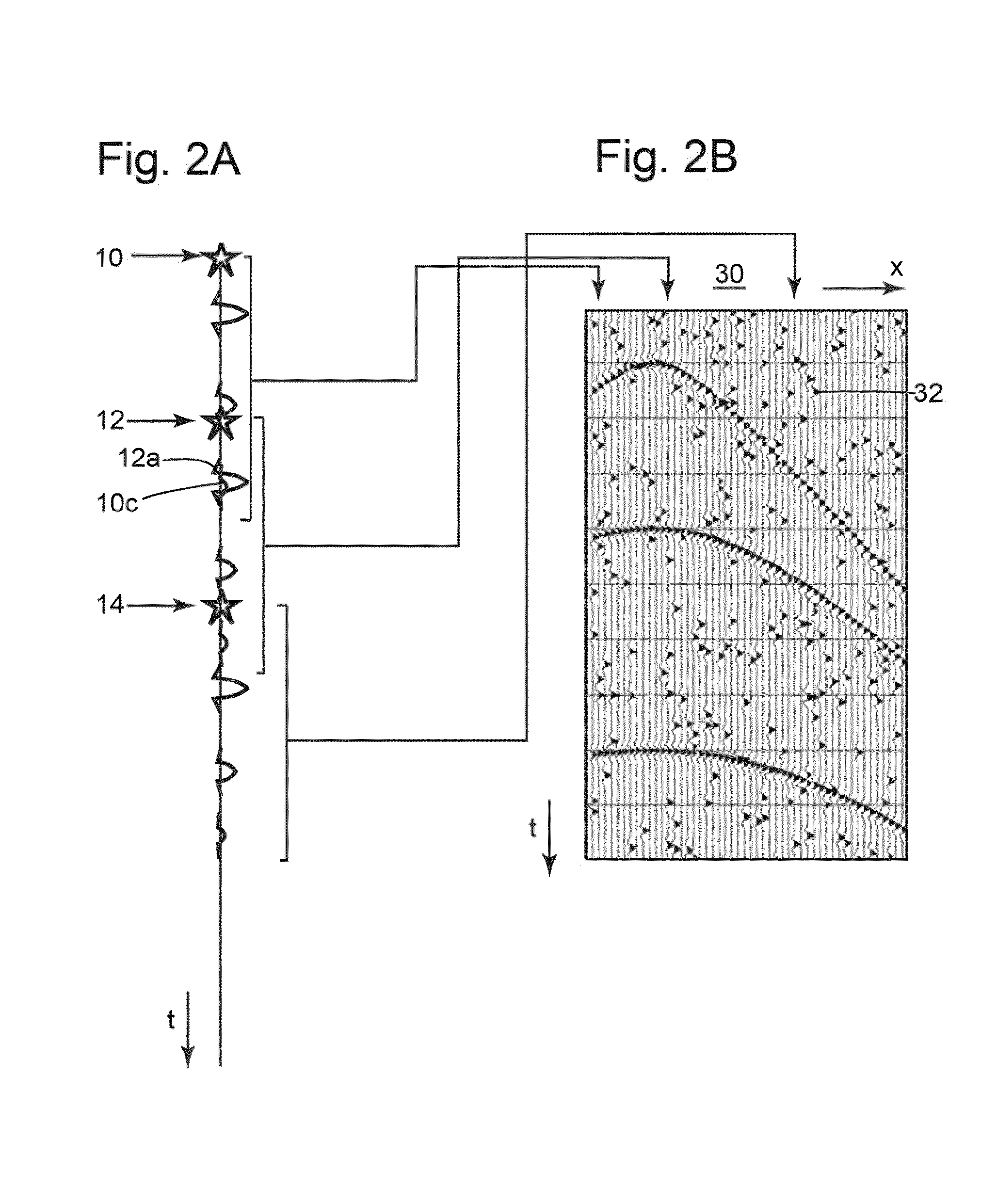Method for designature of seismic data acquired using moving source
a technology of moving source and seismic data, which is applied in the field of methods and systems for generating, acquiring and processing seismic data, and can solve the problems of restricting the use of impulsive sources, reducing the amount of data collected per day of marine operation, and reducing the difficulty of keeping stationary while shooting vibratory sources
- Summary
- Abstract
- Description
- Claims
- Application Information
AI Technical Summary
Benefits of technology
Problems solved by technology
Method used
Image
Examples
Embodiment Construction
[0043]The following description of the exemplary embodiments refers to the accompanying drawings. The same reference numbers in different drawings identify the same or similar elements. The following detailed description does not limit the invention. The following embodiments are discussed, for simplicity, with regard to the terminology and structure of a towed marine seismic system. However, the embodiments to be discussed next are not limited to a marine seismic system, but may be applied other types of seismic systems, such as a land-surface seismic system or a seabed cable / node survey system. The method is also applicable to transition zone studies where energy emitted by a marine source is recorded on land.
[0044]Reference throughout the specification to “one embodiment” or “an embodiment” (or “aspect” or “example”) means that a particular feature, structure or characteristic described in connection with an embodiment is included in at least one embodiment of the subject matter ...
PUM
 Login to View More
Login to View More Abstract
Description
Claims
Application Information
 Login to View More
Login to View More - R&D
- Intellectual Property
- Life Sciences
- Materials
- Tech Scout
- Unparalleled Data Quality
- Higher Quality Content
- 60% Fewer Hallucinations
Browse by: Latest US Patents, China's latest patents, Technical Efficacy Thesaurus, Application Domain, Technology Topic, Popular Technical Reports.
© 2025 PatSnap. All rights reserved.Legal|Privacy policy|Modern Slavery Act Transparency Statement|Sitemap|About US| Contact US: help@patsnap.com



